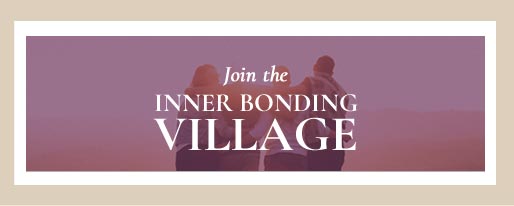Learning to See Our Core Self
By Nancy SwisherDecember 31, 2006
In this article, Nancy offers a deep understanding of what it is like when we peel away the layers of woundedness and experience our true, core essence.
The process of learning to see oneself--who we are at the level of our essence where our divinity lives, fascinates me. It seems to me all of healing is really about this. Our pain comes from not seeing ourselves clearly, and then acting from a part of us that's cut off from our essence.
When we don't see our essence, it's like an eclipse of the self. I think of the total eclipse of the moon last May. The bright full moon is like our essence. Gradually, the shadow of the earth covers it, separates it from the sun, which we could think of as Spirit. Finally, the bright full moon is totally gone. In the same way, our wounded self - that part of us that holds tightly to our false beliefs: "I'm too fat", "I'll never be happy", "I'm unworthy"-- eclipses our individual divinity. The wounded-self obscures the core-self, for we know no other way to be.
One of the most essential needs a child has is to be seen at a soul-level. When parents are spiritually connected, they are able to see into their child and to reflect the child's essence back to them.
And of course, when parents are wounded, they are unable to see their children on the soul-level. Since children get their sense of self from the adults around them, especially from parents, lots of distortion takes place. The bright moon that we are is covered over by all the projection of the wounded adults around us.
A client of mine recently remembered, while dialoguing with his inner child, that the only time he was ever "seen" by his parents was when they criticized him. That was the only kind of attention he ever received. If they weren't telling him something wrong about himself, they were ignoring him. His inner child told him that he literally felt like he didn't exist if he wasn't being criticized. Not surprisingly, his wounded adult-self is constantly criticizing - both himself and others. Otherwise, he doesn't feel like he exists.
Through practicing Inner Bonding, he is learning to see himself through the eyes of Spirit, and experiencing what it feels like to be in his essence.
What I love about Inner Bonding is how it is a process for peeling back the layers of our distorted self-image (our false beliefs about who we are) and allowing the essence of who we are to emerge. Every time you do the six-steps of Inner Bonding, the brightness of your essence gets larger, more powerful. Every time you explore the deep painful feelings of the wounded child, that part of us that was consistently viewed through the eyes of a wounded adult, and bring in the truth from Spirit about who you really are, your light gets brighter. And every time you take loving action for the core self, the shadow of the wounded self moves across the 'moon' of your soul, allowing more of you to shine.
I like to imagine all of the unique brilliant lights that we all are getting brighter and brighter as we practice Inner Bonding every day.
Nancy Swisher, M.A. is an Inner Bonding Facilitator-in-Training and has been in private practice as a Spiritually-based counselor since l995. She is at work on a memoir about her own healing process, parts of which can be seen on this website in the Learning Center under creative writing.
 Send this article to a friend
Send this article to a friend  Print this article
Print this article  Bookmarked 5 time(s)
Bookmarked 5 time(s)
| Related Articles |
|---|
| How Toys Become Real, from The Velveteen Rabbit |
| Live Your Soul not a Role |
| Who Do You Think You Are? |
Comments
| Author | Comment | Date |
|---|---|---|
| Join the Inner Bonding Community to add your comment to articles and see the comments of others... | ||

Daily Inspiration
Today, remember that you are a child of God. Remember that Spirit supports your highest good at all times. Remember that it is your birthright to give and to receive. Remember that we live in an abundant universe and that you have a right to and are deserving of that abundance.
By Dr. Margaret Paul

 Share with Del.icio.us
Share with Del.icio.us Share with Digg
Share with Digg






